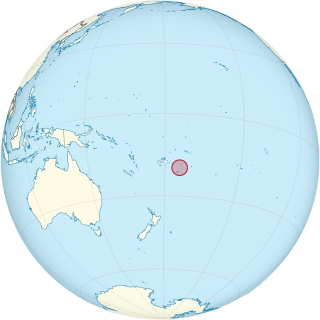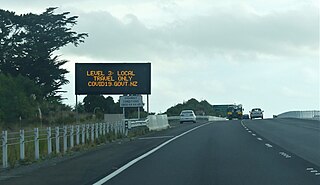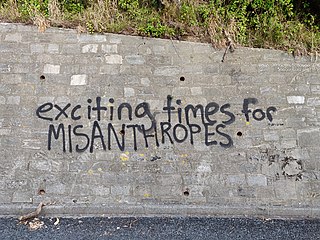Contents
| |||||
| Decades: | |||||
|---|---|---|---|---|---|
| See also: | |||||
Events in the year 2020 in Samoa .
| |||||
| Decades: | |||||
|---|---|---|---|---|---|
| See also: | |||||
Events in the year 2020 in Samoa .
Ongoing – COVID-19 pandemic in Oceania
| | This section is empty. You can help by adding to it. (September 2020) |
The COVID-19 pandemic in Malaysia was a part of the worldwide pandemic of coronavirus disease 2019 caused by severe acute respiratory syndrome coronavirus 2. As of 10 February 2023, with over 5 million confirmed COVID-19 cases, a high of approximately 323,000 active cases, nearly 40,000 deaths, and over 66 million tests, the country was ranked third in the number of COVID-19 cases in Southeast Asia behind Vietnam and Indonesia, and fourth in the number of COVID-19 deaths in Southeast Asia behind Indonesia, the Philippines, and Vietnam.
The COVID-19 pandemic in New Zealand was part of the pandemic of coronavirus disease 2019 caused by severe acute respiratory syndrome coronavirus 2. The first case of the disease in New Zealand was reported on 28 February 2020. The country recorded over 2,274,370 cases. Over 3,000 people died as a result of the pandemic, with cases recorded in all twenty district health board (DHB) areas. The pandemic first peaked in early April 2020, with 89 new cases recorded per day and 929 active cases. Cases peaked again in October 2021 with 134 new cases reported on 22 October.

The COVID-19 pandemic was confirmed to have reached Oceania on 25 January 2020 with the first confirmed case reported in Melbourne, Australia. The virus has spread to all sovereign states and territories in the region. Australia and New Zealand were praised for their handling of the pandemic in comparison to other Western nations, with New Zealand and each state in Australia wiping out all community transmission of the virus several times even after re-introduction in the community.

National responses to the COVID-19 pandemic have been varied, and have included containment measures such as lockdowns, quarantines, and curfews. As of 30 December 2024, 777,074,039 cases of COVID-19 have been reported, resulting in 7,079,129 reported deaths. The most affected countries in terms of confirmed cases are the United States, Brazil, India, Russia, South Africa, Peru, Mexico, Chile, the United Kingdom, and Iran.

The COVID-19 pandemic in Samoa is part of the ongoing worldwide pandemic of coronavirus disease 2019 caused by severe acute respiratory syndrome coronavirus 2. The virus was confirmed to have reached Samoa on 18 November 2020. The country reported its second case on 27 November.
The COVID-19 pandemic in Tuvalu is part of the ongoing worldwide pandemic of coronavirus disease 2019 caused by severe acute respiratory syndrome coronavirus 2. The virus was confirmed to have reached Tuvalu on 20 May 2022. As of 31 August 2022, a total of 25,591 vaccine doses have been administered.
The COVID-19 pandemic in Vanuatu is part of the ongoing worldwide pandemic of coronavirus disease 2019 caused by severe acute respiratory syndrome coronavirus 2. The virus was confirmed to have reached Vanuatu on 11 November 2020.

The COVID-19 pandemic was confirmed to have reached Tonga on 29 October 2021 with a traveller who tested positive in quarantine. Several more cases were found in January and February 2022 in a minor outbreak during the aftermath of the 2022 Hunga Tonga–Hunga Ha'apai eruption and tsunami as other countries delivered aid. Tonga had followed a "Covid-free" policy.

This article documents the chronology of the response to the COVID-19 pandemic in March 2020, which originated in Wuhan, China in December 2019. Some developments may become known or fully understood only in retrospect. Reporting on this outbreak began in December 2019.

The COVID-19 pandemic in the Cook Islands is part of the ongoing worldwide pandemic of coronavirus disease 2019 caused by severe acute respiratory syndrome coronavirus 2. As of 30 October 2021, 12,841 first doses and 12,498 second doses of vaccine had been administered, which represents over 97% of the eligible population (12+) fully vaccinated.

The COVID-19 pandemic in Niue was part of the worldwide pandemic of coronavirus disease 2019 caused by severe acute respiratory syndrome coronavirus 2. Niue reported its first confirmed case on 9 March 2022.
The COVID-19 pandemic in American Samoa is part of the worldwide pandemic of coronavirus disease 2019 caused by severe acute respiratory syndrome coronavirus 2. The COVID-19 pandemic was confirmed to have reached the unincorporated United States territory of American Samoa on November 9, 2020.

This article documents the chronology of the response to the COVID-19 pandemic in January 2021, which originated in Wuhan, China in December 2019. Some developments may become known or fully understood only in retrospect. Reporting on this pandemic began in December 2019.

Managed isolation and quarantine (MIQ) was a quarantine system implemented by the New Zealand Government during the country's COVID-19 pandemic. Under the system, people entering New Zealand, COVID-19 positive cases and some of their close contacts were required to isolate at an MIQ facility for 14 days. Compulsory managed isolation and quarantine was announced by Prime Minister Jacinda Ardern at the 1pm press conference on 9 April 2020, with the system coming into effect for people boarding flights to New Zealand from midnight that day. The government contracted dozens of hotels in five cities that were exclusively used as managed isolation facilities. The task was organised by the Managed Isolation and Quarantine (MIQ) unit, part of the COVID-19 All-of-Government Response Group.
Events from 2020 in Vanuatu.

The New Zealand Government responded to the COVID-19 pandemic in New Zealand in various ways. In early February 2020, the Government imposed travel restrictions on China in response to the global COVID-19 pandemic originating in Wuhan and also repatriated citizens and residents from Wuhan. Following the country's first case, which originated in Iran, the Government imposed travel restrictions on Iran.

The COVID-19 pandemic in New Zealand has had far-reaching consequences on the country that went beyond the spread of the disease itself and efforts to eliminate it, including education, faith communities, Māori, mass gatherings, sports, recreation, and travel. In addition, there were several recorded cases of lockdown violations, leaks, and misinformation about the COVID-19 virus and vaccines.

This article documents the chronology of the response to the COVID-19 pandemic in May 2021, which originated in Wuhan, China in December 2019. Some developments may become known or fully understood only in retrospect. Reporting on this pandemic began in December 2019.
This article documents the chronology and epidemiology of SARS-CoV-2, the virus which causes the coronavirus disease 2019 (COVID-19) and is responsible for the COVID-19 pandemic in Australia during 2020.

Zero-COVID, also known as COVID-Zero and "Find, Test, Trace, Isolate, and Support" (FTTIS), was a public health policy implemented by some countries, especially China, during the COVID-19 pandemic. In contrast to the "living with COVID-19" strategy, the zero-COVID strategy was purportedly one "of control and maximum suppression". Public health measures used to implement the strategy included as contact tracing, mass testing, border quarantine, lockdowns, and mitigation software in order to stop community transmission of COVID-19 as soon as it was detected. The goal of the strategy was to get the area back to zero new infections and resume normal economic and social activities.